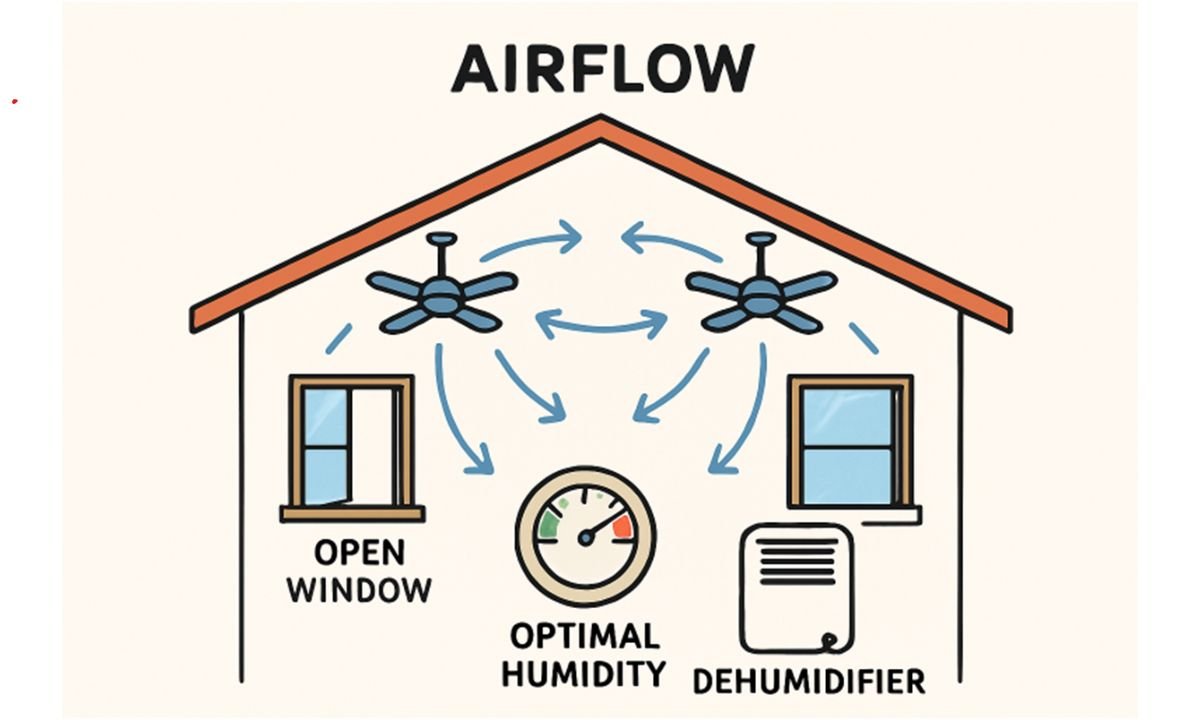Mold can silently infiltrate homes, posing health and structural hazards. It may grow behind walls, under floors, or inside HVAC systems. Early action and understanding causes are crucial for prevention. Factors like humidity, poor ventilation, leaks, and storage contribute to mold. Following proven steps helps minimize risk, protect your home’s value, and ensure safety.
Understanding Mold and Its Dangers
Mold is a type of fungus that can be hazardous inside a home. It spreads via airborne spores that land on damp surfaces, forming colonies in 24–48 hours. Health risks include allergies, asthma, infections, and neurological issues with prolonged exposure. Unchecked mold damages materials such as wood and drywall, compromising the home’s structure and appearance. Vulnerable groups, such as those with allergies, children, the elderly, or those with immunocompromised conditions, are especially at risk, making timely mold removal and vigilance essential. Regular inspections and prompt responses to moisture problems are crucial in preventing mold from becoming a recurring issue.
Controlling Humidity Levels
Controlling humidity is crucial to preventing mold, as it thrives in environments with humidity levels above 60%. Keep indoor levels between 30-50% using a hygrometer and dehumidifiers, especially in damp areas like basements and bathrooms. Regularly service your AC to reduce moisture. Small humidity fluctuations, common during rainy seasons or in moist regions, can trigger mold. Consistently maintaining steady humidity levels is the simplest and most effective prevention.
Ensuring Proper Ventilation
Stagnant air traps moisture, promoting mold growth. Use whole-house ventilation and exhaust fans in areas like bathrooms and kitchens. Run fans during and after showering or cooking. Open windows to increase airflow and dry surfaces. If rooms feel stuffy or smell musty, improve ventilation. Smart systems can automate moisture removal and air filtration.
Promptly Addressing Water Leaks
Even small leaks can cause major mold problems if unnoticed for days or weeks. Regularly check common areas like under sinks, around bathtubs, behind appliances, along windowsills, and in attics and basements. Signs include water stains, warped drywall, bubbling paint, or damp smells. Quick repairs prevent minor issues from becoming costly mold growth and extensive repairs. Stay vigilant and act fast to save time and money.
Utilizing Natural Mold Inhibitors
Some essential oils like tea tree, clove, lavender, and lemongrass have antifungal properties. Products or DIY solutions with these oils can be sprayed on bathroom tiles, window sills, or non-porous surfaces prone to mold. Waterless diffusers can reduce airborne mold spores in small spaces. These help, but don’t replace core moisture control. Always test first; natural remedies don’t fix deep or widespread mold issues.
Regular Home Inspections and Maintenance
Routine seasonal home inspections are crucial for detecting and preventing mold early. Focus on areas prone to moisture, such as bathrooms, kitchens, crawl spaces, and locations where water naturally accumulates. Warning signs include discoloration, musty odors, water stains, and peeling paint. To prevent moisture issues, maintain clean gutters, direct downspouts away from the foundation, ensure proper ground slope, and seal any cracks around windows, doors, and foundations. Consistent maintenance can help identify and resolve issues before they lead to costly repairs.
Proper Storage and Organization
Dark, crowded storage spaces are prime locations for mold growth. To reduce this risk, use airtight containers, avoid storing belongings on the floor, and keep items away from exterior walls to promote air circulation. Declutter regularly and use shelving to lift boxes, making cleaning and inspection easier.
When to Seek Professional Help
If mold covers over 10 square feet or if you or your family members experience ongoing health symptoms, such as coughing, headaches, or allergies, don’t attempt to handle it alone. Professionals can assess, find moisture sources, and use special equipment to safely fix the problem—protecting your home from future mold. Taking these steps helps safeguard your health and home longevity.
Conclusion
Mold prevention requires a proactive approach that combines awareness, maintenance, and timely action. By controlling humidity, ensuring proper ventilation, addressing leaks promptly, and incorporating regular inspections, homeowners can create an environment where mold struggles to thrive. Natural inhibitors and smart storage practices add an extra layer of protection, while professional help should be sought for severe cases to safeguard both health and property. With consistent vigilance, you can protect your home’s structure, maintain indoor air quality, and ensure a safe and healthy living space.
READ ALSO: Elevate Your Home with the Perfect Floorboards

